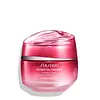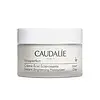What's inside
What's inside
 Key Ingredients
Key Ingredients

 Benefits
Benefits

 Concerns
Concerns

 Ingredients Side-by-side
Ingredients Side-by-side

Water
Skin ConditioningDipropylene Glycol
HumectantGlycerin
HumectantBetaine
HumectantAlcohol Denat.
AntimicrobialDimethicone
EmollientIsodecyl Neopentanoate
EmollientPPG-3 Dipivalate
Skin ConditioningXylitol
HumectantPhytosteryl/Octyldodecyl Lauroyl Glutamate
Skin ConditioningPhenoxyethanol
PreservativeHdi/Trimethylol Hexyllactone Crosspolymer
Ammonium Acryloyldimethyltaurate/Beheneth-25 Methacrylate Crosspolymer
Emulsion StabilisingCarbomer
Emulsion StabilisingAlcohol
AntimicrobialPotassium Hydroxide
BufferingErythritol
HumectantPEG/PPG-14/7 Dimethyl Ether
Skin ConditioningPEG/PPG-17/4 Dimethyl Ether
Skin ConditioningTocopheryl Acetate
AntioxidantParfum
MaskingButylene Glycol
HumectantXanthan Gum
EmulsifyingDisodium EDTA
Acrylates/C10-30 Alkyl Acrylate Crosspolymer
Emulsion StabilisingAminopropyl Dimethicone
Caffeine
Skin ConditioningTremella Fuciformis Polysaccharide
Emulsion StabilisingSilica
AbrasiveSodium Metaphosphate
BufferingHexyl Cinnamal
PerfumingTocopherol
AntioxidantLimonene
PerfumingLinalool
PerfumingSodium Metabisulfite
AntioxidantCitronellol
PerfumingScutellaria Baicalensis Root Extract
AstringentAngelica Keiskei Leaf/Stem Extract
Skin ConditioningGeraniol
PerfumingCamellia Sinensis Leaf Extract
AntimicrobialSodium Acetylated Hyaluronate
HumectantCI 77491
Cosmetic ColorantCitrus Unshiu Peel Extract
MaskingZingiber Aromaticus Extract
Skin ConditioningHydrolyzed Conchiolin Protein
Skin ConditioningCinnamomum Cassia Bark Extract
MaskingPyrola Incarnata Extract
Skin ConditioningPanax Ginseng Root Extract
EmollientWater, Dipropylene Glycol, Glycerin, Betaine, Alcohol Denat., Dimethicone, Isodecyl Neopentanoate, PPG-3 Dipivalate, Xylitol, Phytosteryl/Octyldodecyl Lauroyl Glutamate, Phenoxyethanol, Hdi/Trimethylol Hexyllactone Crosspolymer, Ammonium Acryloyldimethyltaurate/Beheneth-25 Methacrylate Crosspolymer, Carbomer, Alcohol, Potassium Hydroxide, Erythritol, PEG/PPG-14/7 Dimethyl Ether, PEG/PPG-17/4 Dimethyl Ether, Tocopheryl Acetate, Parfum, Butylene Glycol, Xanthan Gum, Disodium EDTA, Acrylates/C10-30 Alkyl Acrylate Crosspolymer, Aminopropyl Dimethicone, Caffeine, Tremella Fuciformis Polysaccharide, Silica, Sodium Metaphosphate, Hexyl Cinnamal, Tocopherol, Limonene, Linalool, Sodium Metabisulfite, Citronellol, Scutellaria Baicalensis Root Extract, Angelica Keiskei Leaf/Stem Extract, Geraniol, Camellia Sinensis Leaf Extract, Sodium Acetylated Hyaluronate, CI 77491, Citrus Unshiu Peel Extract, Zingiber Aromaticus Extract, Hydrolyzed Conchiolin Protein, Cinnamomum Cassia Bark Extract, Pyrola Incarnata Extract, Panax Ginseng Root Extract
Water
Skin ConditioningGlycerin
HumectantDicaprylyl Carbonate
EmollientSqualane
EmollientOctyldodecyl Myristate
EmollientC20-22 Alkyl Phosphate
EmulsifyingC20-22 Alcohols
Emulsion StabilisingPaeonia Lactiflora Root Extract
Skin ConditioningPalmitoyl Grapevine Shoot Extract
AntioxidantBisabolol
MaskingCitrus Aurantium Amara Flower Water
MaskingSaccharide Isomerate
HumectantNiacinamide
SmoothingParfum
MaskingCarbomer
Emulsion StabilisingSilica
AbrasiveCI 77891
Cosmetic ColorantEthylhexylglycerin
Skin ConditioningMica
Cosmetic ColorantSodium Hydroxide
BufferingSodium Phytate
Sodium Hyaluronate
HumectantCitric Acid
BufferingTin Oxide
AbrasiveSodium Citrate
BufferingTocopherol
AntioxidantPotassium Sorbate
PreservativeSodium Benzoate
MaskingWater, Glycerin, Dicaprylyl Carbonate, Squalane, Octyldodecyl Myristate, C20-22 Alkyl Phosphate, C20-22 Alcohols, Paeonia Lactiflora Root Extract, Palmitoyl Grapevine Shoot Extract, Bisabolol, Citrus Aurantium Amara Flower Water, Saccharide Isomerate, Niacinamide, Parfum, Carbomer, Silica, CI 77891, Ethylhexylglycerin, Mica, Sodium Hydroxide, Sodium Phytate, Sodium Hyaluronate, Citric Acid, Tin Oxide, Sodium Citrate, Tocopherol, Potassium Sorbate, Sodium Benzoate
 Reviews
Reviews

Ingredients Explained
These ingredients are found in both products.
Ingredients higher up in an ingredient list are typically present in a larger amount.
Carbomer is a polymer of acrylic acid. Its main role is to create a gel consistency.
A high amount of carbomer can cause pilling or balling up of products. Don't worry, most products contain 1% or less of carbomer.
Glycerin is already naturally found in your skin. It helps moisturize and protect your skin.
A study from 2016 found glycerin to be more effective as a humectant than AHAs and hyaluronic acid.
As a humectant, it helps the skin stay hydrated by pulling moisture to your skin. The low molecular weight of glycerin allows it to pull moisture into the deeper layers of your skin.
Hydrated skin improves your skin barrier; Your skin barrier helps protect against irritants and bacteria.
Glycerin has also been found to have antimicrobial and antiviral properties. Due to these properties, glycerin is often used in wound and burn treatments.
In cosmetics, glycerin is usually derived from plants such as soybean or palm. However, it can also be sourced from animals, such as tallow or animal fat.
This ingredient is organic, colorless, odorless, and non-toxic.
Glycerin is the name for this ingredient in American English. British English uses Glycerol/Glycerine.
Learn more about GlycerinParfum is a catch-all term for an ingredient or more that is used to give a scent to products.
Also called "fragrance", this ingredient can be a blend of hundreds of chemicals or plant oils. This means every product with "fragrance" or "parfum" in the ingredients list is a different mixture.
For instance, Habanolide is a proprietary trade name for a specific aroma chemical. When used as a fragrance ingredient in cosmetics, most aroma chemicals fall under the broad labeling category of “FRAGRANCE” or “PARFUM” according to EU and US regulations.
The term 'parfum' or 'fragrance' is not regulated in many countries. In many cases, it is up to the brand to define this term.
For instance, many brands choose to label themselves as "fragrance-free" because they are not using synthetic fragrances. However, their products may still contain ingredients such as essential oils that are considered a fragrance by INCI standards.
One example is Calendula flower extract. Calendula is an essential oil that still imparts a scent or 'fragrance'.
Depending on the blend, the ingredients in the mixture can cause allergies and sensitivities on the skin. Some ingredients that are known EU allergens include linalool and citronellol.
Parfum can also be used to mask or cover an unpleasant scent.
The bottom line is: not all fragrances/parfum/ingredients are created equally. If you are worried about fragrances, we recommend taking a closer look at an ingredient. And of course, we always recommend speaking with a professional.
Learn more about ParfumSilica, also known as silicon dioxide, is a naturally occurring mineral. It is used as a fine, spherical, and porous powder in cosmetics.
Though it has exfoliant properties, the function of silica varies depending on the product.
The unique structure of silica enhances the spreadability and adds smoothness, making it a great texture enhancer.
It is also used as an active carrier, emulsifier, and mattifier due to its ability to absorb excess oil.
In some products, tiny microneedles called spicules are made from silica or hydrolyzed sponge. When you rub them in, they lightly polish away dead skin layers and enhance the penetration of active ingredients.
Learn more about SilicaTocopherol (also known as Vitamin E) is a common antioxidant used to help protect the skin from free-radicals and strengthen the skin barrier. It's also fat soluble - this means our skin is great at absorbing it.
Vitamin E also helps keep your natural skin lipids healthy. Your lipid skin barrier naturally consists of lipids, ceramides, and fatty acids. Vitamin E offers extra protection for your skin’s lipid barrier, keeping your skin healthy and nourished.
Another benefit is a bit of UV protection. Vitamin E helps reduce the damage caused by UVB rays. (It should not replace your sunscreen). Combining it with Vitamin C can decrease sunburned cells and hyperpigmentation after UV exposure.
You might have noticed Vitamin E + C often paired together. This is because it is great at stabilizing Vitamin C. Using the two together helps increase the effectiveness of both ingredients.
There are often claims that Vitamin E can reduce/prevent scarring, but these claims haven't been confirmed by scientific research.
Learn more about TocopherolWater. It's the most common cosmetic ingredient of all. You'll usually see it at the top of ingredient lists, meaning that it makes up the largest part of the product.
So why is it so popular? Water most often acts as a solvent - this means that it helps dissolve other ingredients into the formulation.
You'll also recognize water as that liquid we all need to stay alive. If you see this, drink a glass of water. Stay hydrated!
Learn more about Water